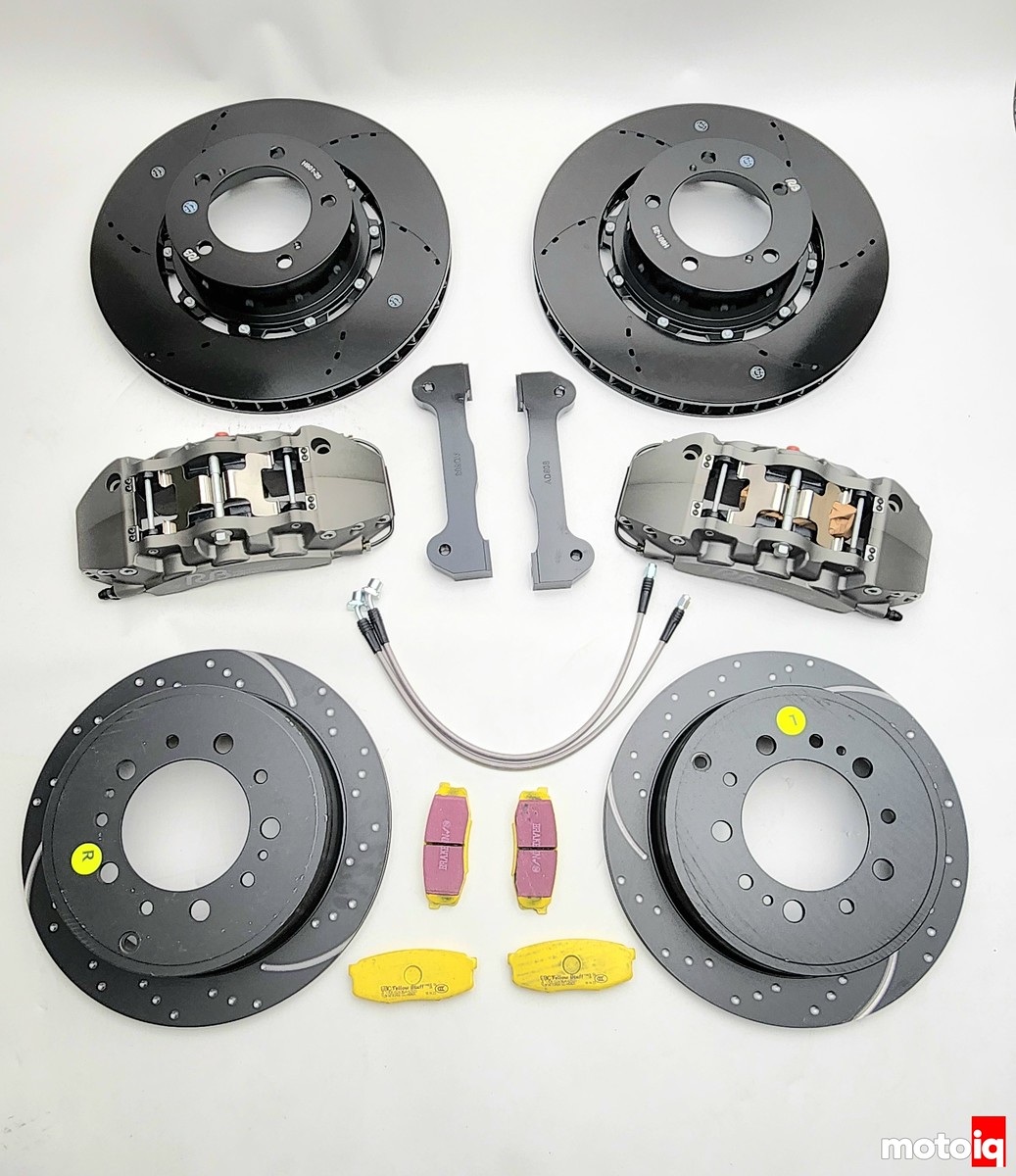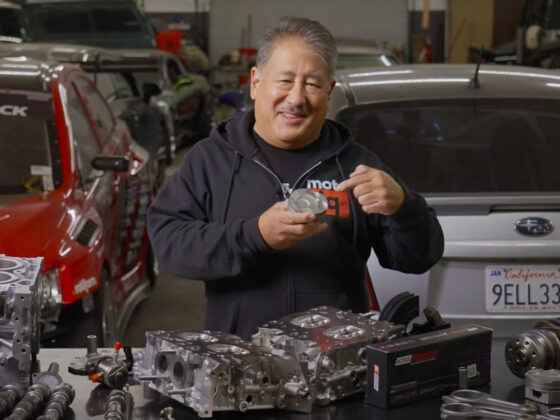
The EBC rotors are deeply slotted with a ball mill to sweep the hot zone of vaporized pad material improving pad bite. The ball-milled dimples give the look of drilled rotors but without their cracking risk. The slots and dimples also help the pads bite better under wet conditions. EBC says their deep slots reduce pad temperatures by about 100 degrees by allowing the hot vaporized pad material out and cooling air in.

For the rear brake pads, we chose a set of EBC Truck Yellowstuff compound pads. Truck Yellowstuff Sport brake pads are specially compounded for trucks used in towing and heavy loads and those where wheel and tire oversize upgrades have been fitted. The pad has been recently reformulated with a higher aramid fiber content and is easy on rotors.
Truck Yellowstuff Sport brake pads are not rated as low dust but create lower dust than your typical OEM pads. These pads are a full FMVSS grade higher in friction level than most stock pads with a hard biting Mu of 0.48 and are useable for temperatures of up to 450c and as such will feel stronger on the pedal after installation and bedding.
The pads use a race-developed friction material designed for heavy heat and brake abuse. As an ideal upgrade pad when fitting oversized tires and wheels, the EBC Yellowstuff brake pads have been tested in off-road desert racing. The EBC pads also have a unique break in coating that helps deglaze the rotors and bed in new pads quickly. We are eager to evaluate this feature.

For the first step, we removed our TRD brake system. Our rotor had rusted in place, probably due to the large amount of off-road river crossings that we have been doing lately.

We had to use the bolt-in-the-threaded holes trick to get the TRD rotors off.




15 comments
I’m lost on why a radial mounted caliper is better when it has an adapter that bolts in the same as the TRD?
Yeah, technically the mount shouldn’t be much stiffer, but the caliper itself will flex less. Be interesting to see in FEA. To do it right you need a new hub. I always thought the radial design was too make it easier to install bigger discs on motorcycles. You can just shim it instead of needing new calipers.
The adaptor is bridged and many times stiffer than the OEM ears.
Very nice brakes. Really like the front rotor design. Does the master cylinder flex the firewall? There can be huge improvement in brake feel with a master cylinder brace, at least on compact cars.
Nice looking kit. How do you like the yellow stuff pads? I’m going to throw the blue stuff on my lx470 soon. I like their compounds and the fact that their pads don’t delaminate like other brands.
I haven’t run their stuff in a long time, they used to work well but wore fast and were dusty, these seem not to dust so far.
Hi Mike,
Two quick questions.
Do the Fig’s front pads have a similar coefficient of friction characteristics to the EBC’s?
If running a front brake upgrade such as this, with stock rear calipers, pads, and rotors, is it better from a brake bias standpoint to run pads with a higher coefficient of friction in the rear, if you find that the front end now tends to dive, with increased ABS activity under braking? Assuming that you do not want to add a proportioning valve to the system, and you have factory ABS and traction control present.
I don’t know the mu for the figs pads but the EBC is 0.42. The Figs pads don’t have tons of initial bite which is ok because the brakes have a lot of torque and I got the less aggressive of the two pads offered. The system feels like the pistons are slightly smaller than the TRD calipers. I would like to increase the rear pad volume for longer service life to match the fronts.
Not to be pedantic, but I think the yellows are advertised .48 while the blues are . 52. If you can get orangestuffs their mu is around .6
The Current EBC website doesnt list a Mu for the yellow which were recently reformulated. I found some old information that said .42.
How can I get these products 2017 Tundra
I mean we have links to Figs engineering in the story.
Hi Mike,
Can you tell me what you did with the dust plate on the front brakes? I’m installing but finding a 1mm gap from the spindle housing and the wheel hub. Worried about dust/debris. What did you guys do with that dust plate to make room for the large rotors? I wanted to just discard but thinking I may need so just cut them way back. Any help please?
Mike
Remove it
Thanks Mike. What about the 1mm gap that remains. No concerns with that small gap that was usually taken up by the dust shield?